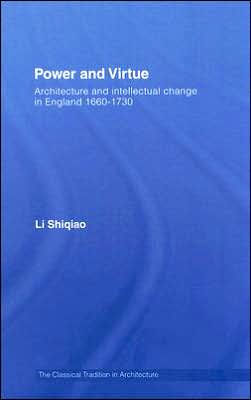Power and Virtue: Architecture and Intellectual Change in England 1660?1730
This is the first full-length study on the connections between English architecture and intellectual change between 1660 and 1730. As new ideas developed in post-Restoration England across the realms of politics, culture, academia and morality, so too did architectural expression of these ideas. Power and Virtue articulately engages English architecture with notions of power and virtue in terms of empirical knowledge on the one hand and humanism and virtuosi on the other.
1111242102
Aimed at an academic readership in history and theory of architecture and the history of English architecture, this unique study will also interest those studying the ideas of material culture.
Power and Virtue: Architecture and Intellectual Change in England 1660?1730
This is the first full-length study on the connections between English architecture and intellectual change between 1660 and 1730. As new ideas developed in post-Restoration England across the realms of politics, culture, academia and morality, so too did architectural expression of these ideas. Power and Virtue articulately engages English architecture with notions of power and virtue in terms of empirical knowledge on the one hand and humanism and virtuosi on the other.
Aimed at an academic readership in history and theory of architecture and the history of English architecture, this unique study will also interest those studying the ideas of material culture.
240.0
In Stock
5
1

Power and Virtue: Architecture and Intellectual Change in England 1660?1730
256
Power and Virtue: Architecture and Intellectual Change in England 1660?1730
256
240.0
In Stock

Product Details
| ISBN-13: | 9780415374248 |
|---|---|
| Publisher: | Taylor & Francis |
| Publication date: | 11/28/2006 |
| Series: | The Classical Tradition in Architecture |
| Pages: | 256 |
| Product dimensions: | 6.12(w) x 9.19(h) x (d) |
About the Author
From the B&N Reads Blog
